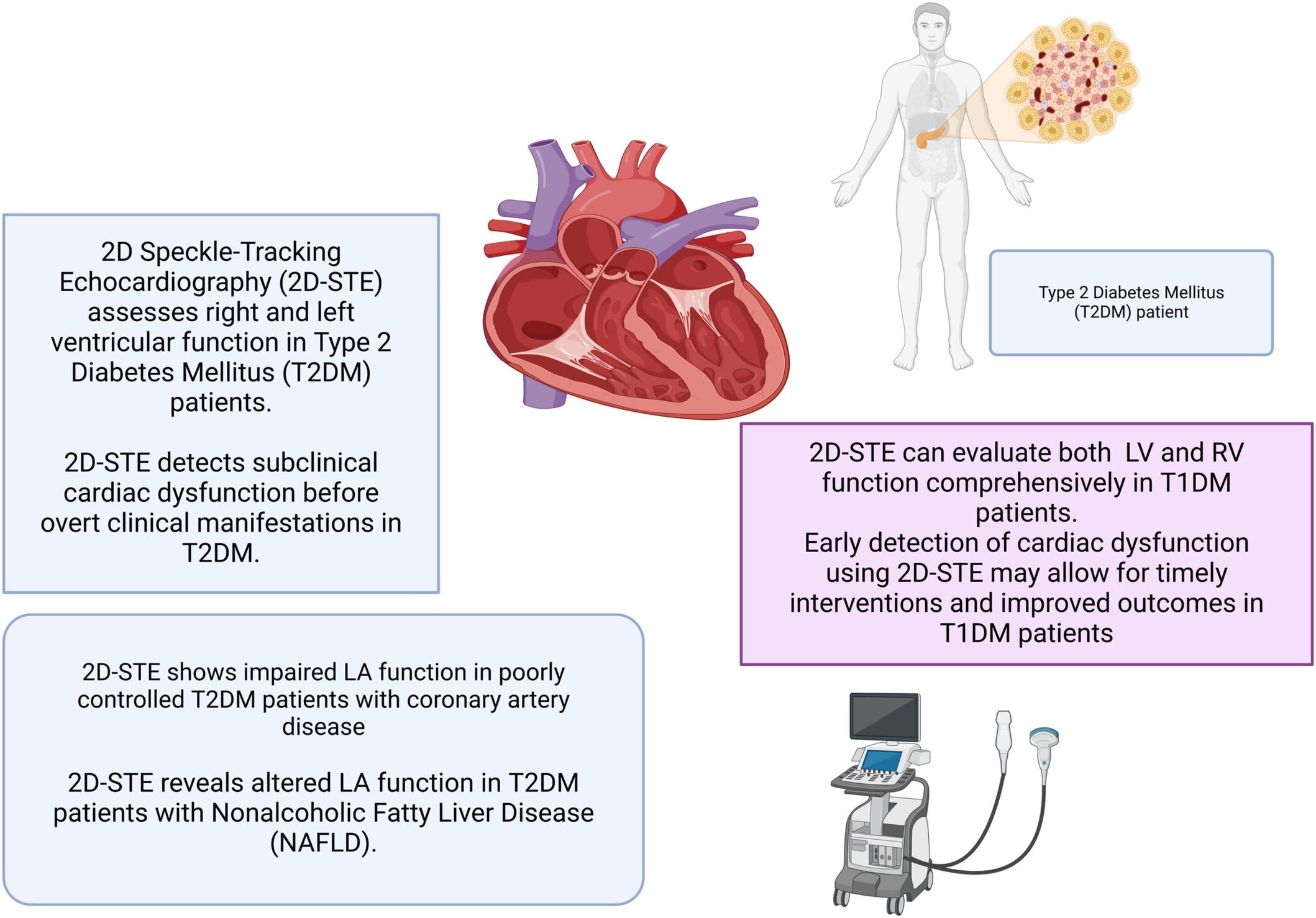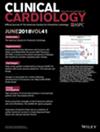A Comprehensive Review of Two-Dimensional Speckle-Tracking Echocardiography in Assessing Right and Left Ventricular Function in Diabetic Patients
Abstract
Background
Two-dimensional speckle-tracking echocardiography (2D-STE) has emerged as a valuable tool for assessing cardiac function in patients with type 1 (T1DM) and type 2 diabetes mellitus (T2DM).
Hypothesis
This review synthesizes recent studies utilizing 2D-STE in diabetic patients, highlighting its clinical applications and findings.
Methods
In this review, relevant studies were identified through comprehensive searches of major scientific databases, including PubMed, Scopus, Google Scholar, ScienceDirect, and other reputable sources.
Results
The results of this study indicate that 2D-STE is capable of detecting subclinical cardiac dysfunction in patients with both T1DM and T2DM, even in instances where conventional echocardiographic parameters appear to be within normal limits. Assessment of right ventricular (RV) function through 2D-STE has demonstrated impaired right ventricular free wall longitudinal strain (RVFWLS) and global longitudinal strain (RVGLS) in individuals with T2DM, which correlates with suboptimal glycemic control. Furthermore, evaluation of left ventricular (LV) function has revealed decreased global longitudinal strain (GLS) and impaired LV twist mechanics in T2DM patients, particularly under conditions of physiological stress.
In T1DM patients, 2D-STE has identified early changes in myocardial deformation, with studies reporting reduced LV and RV strain values compared to healthy controls. The technique has also been effective in assessing the impact of disease duration and glycemic control on cardiac function in both T1DM and T2DM.
Conclusions
These findings underscore the potential of 2D-STE as a sensitive and comprehensive tool for early detection of cardiac dysfunction in both T1DM and T2DM, potentially guiding management strategies and improving outcomes in these high-risk populations.


 求助内容:
求助内容: 应助结果提醒方式:
应助结果提醒方式:


